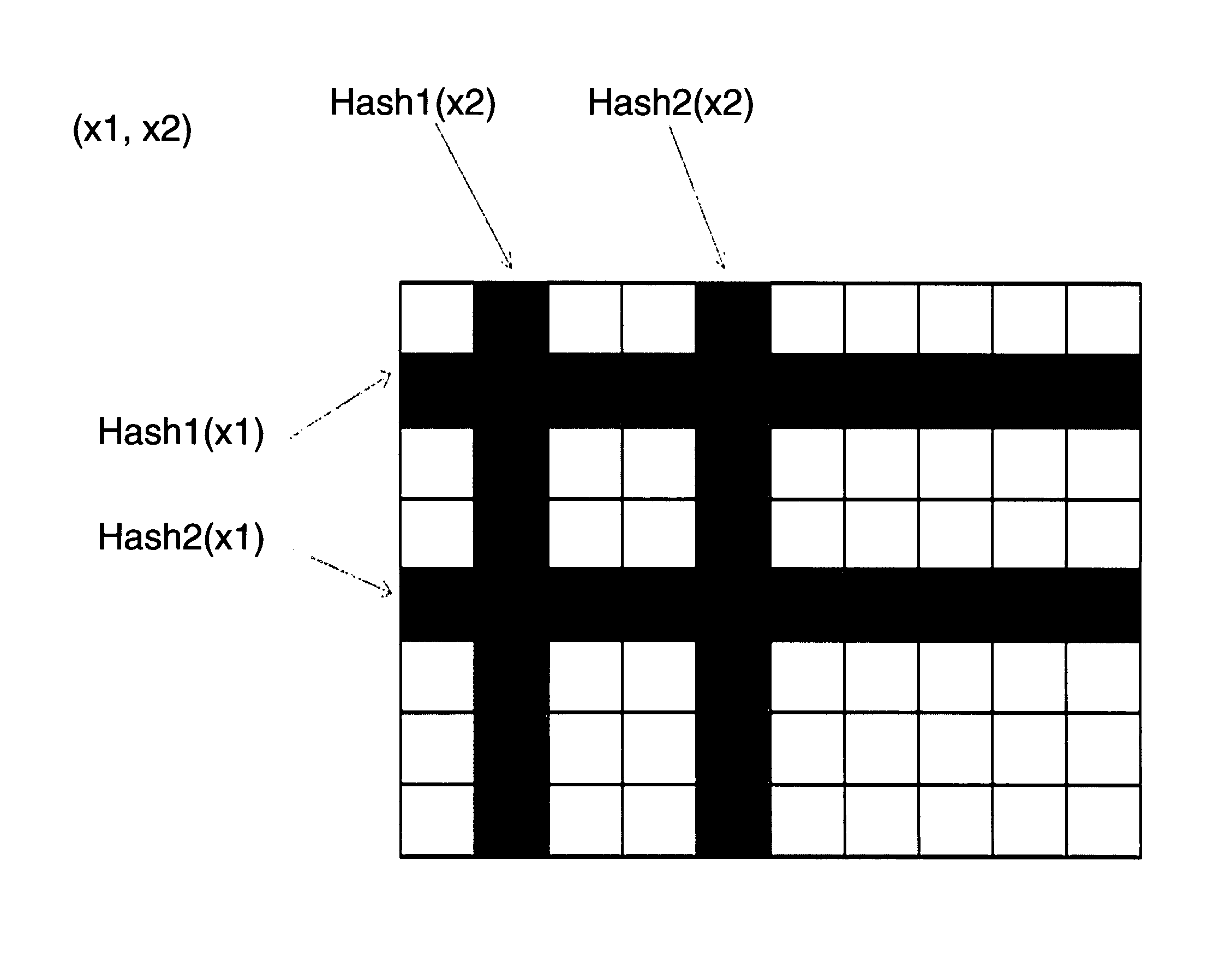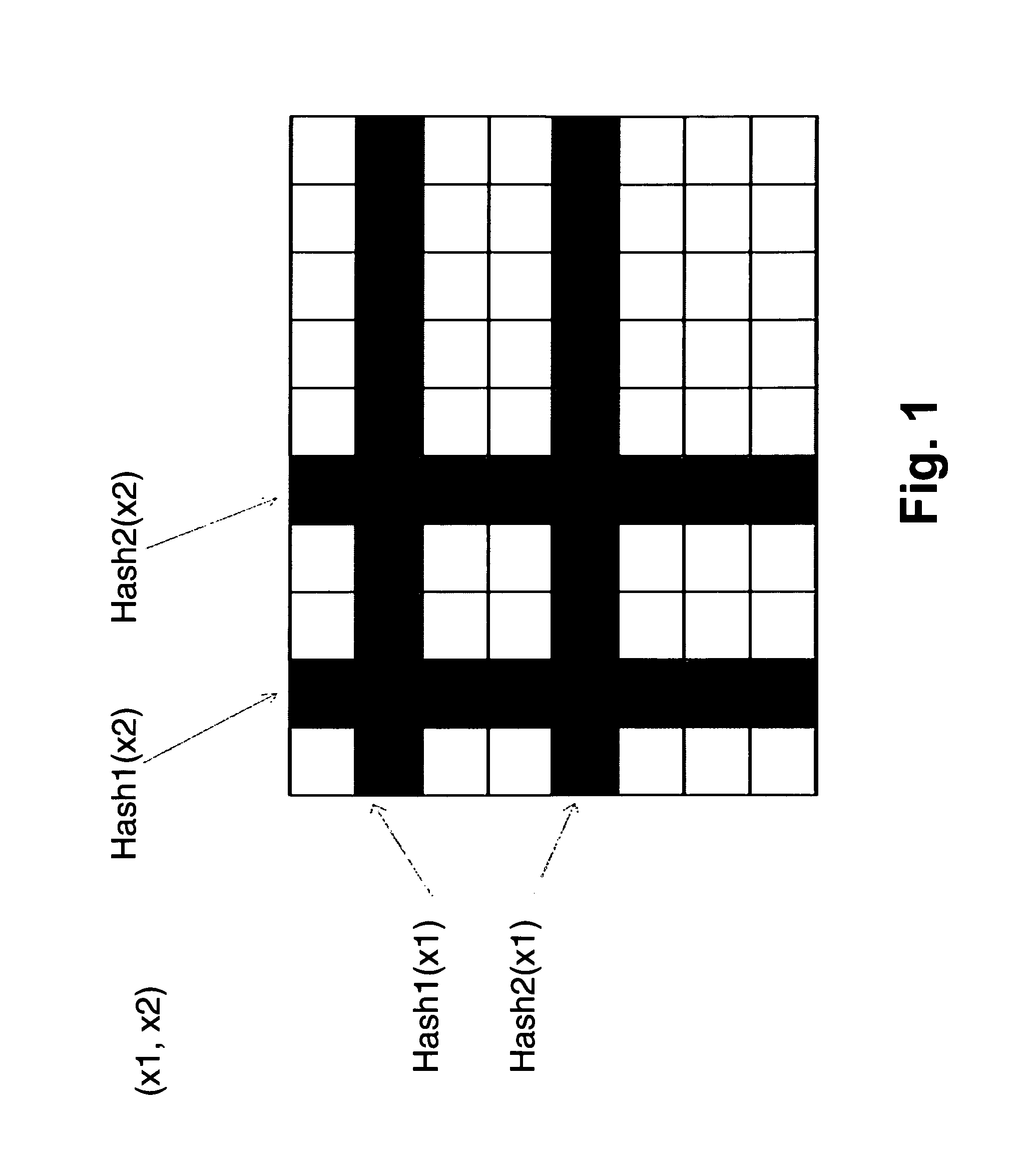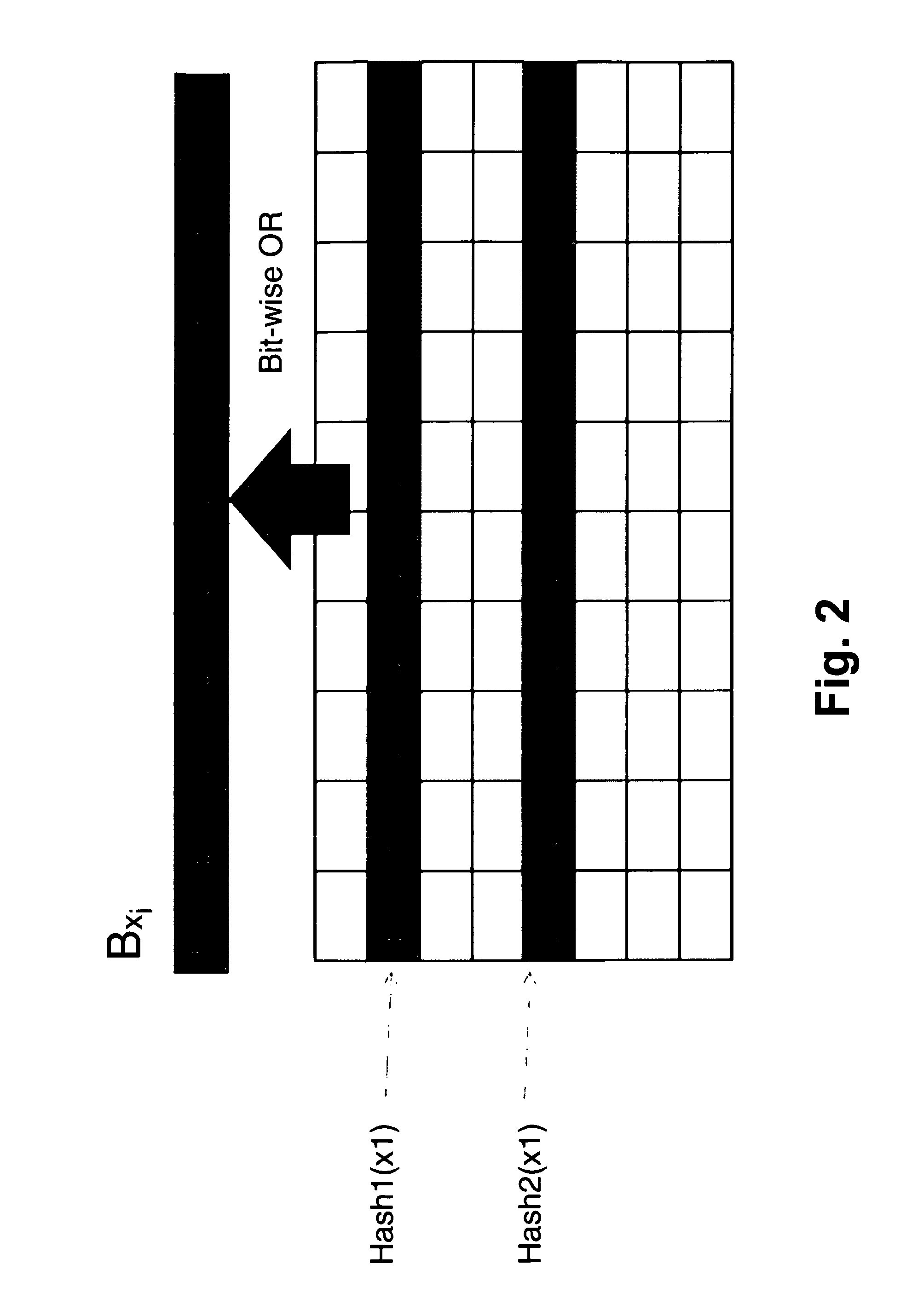Method and system for probabilistic processing of data using a bit matrix, tuples, and hash values
a probability processing and data technology, applied in the field of methods and systems for probabilistic processing of data using a bit matrix, tuples, and hash values, can solve the problems of not being expressive enough for many applications, not linear cbfs, and less appealing for many network applications
- Summary
- Abstract
- Description
- Claims
- Application Information
AI Technical Summary
Benefits of technology
Problems solved by technology
Method used
Image
Examples
Embodiment Construction
[0032]FIG. 1 illustrates by way of example the deployment of a two-dimensional Bloom Filter (in the following denoted briefly 2 dBF) data structure that relies on an M by N bit matrix. M and N are integer values that are chosen according to the cardinality of the possible values of x1 and x2 (which of course depend on the respective application scenario and which are typically known or can be least estimated in advance). By adapting the size of the bit matrix to the cardinality of the possible values that are being processed, the false positive probability inherent in bloom filters can be tuned.
[0033]The embodiment illustrated in FIG. 1 is a simplified example with K=2, K referring to the number of independent hash functions that are used in order to address the bits within the matrix. The simplification was made in order to explain the basic functional principle of the method according to the present invention; however, as will be apparent to a skilled person, in real-world applica...
PUM
 Login to View More
Login to View More Abstract
Description
Claims
Application Information
 Login to View More
Login to View More - R&D
- Intellectual Property
- Life Sciences
- Materials
- Tech Scout
- Unparalleled Data Quality
- Higher Quality Content
- 60% Fewer Hallucinations
Browse by: Latest US Patents, China's latest patents, Technical Efficacy Thesaurus, Application Domain, Technology Topic, Popular Technical Reports.
© 2025 PatSnap. All rights reserved.Legal|Privacy policy|Modern Slavery Act Transparency Statement|Sitemap|About US| Contact US: help@patsnap.com



